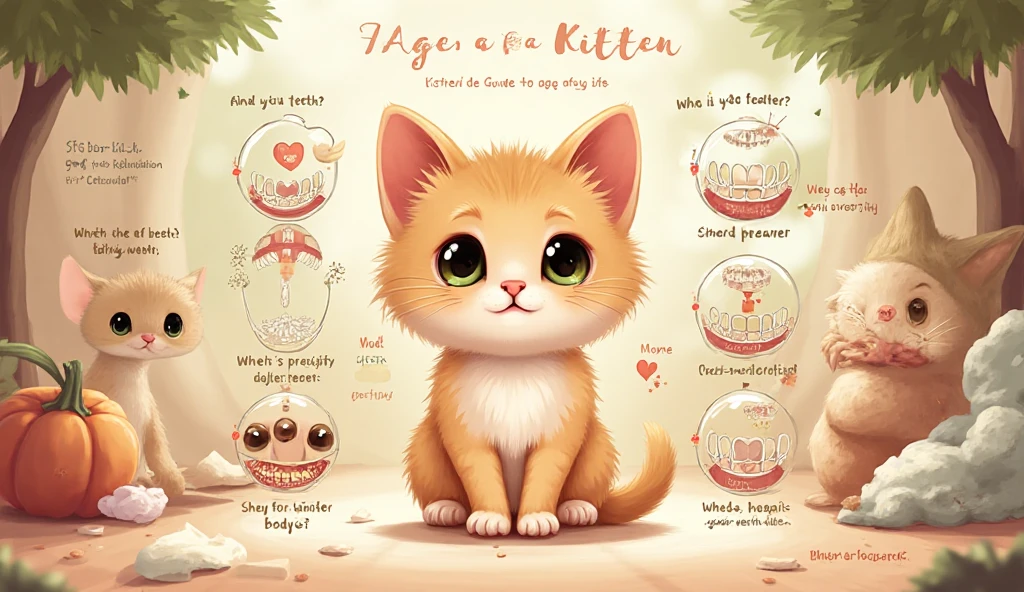Introduction
Kittens grow fast. Each week brings big changes. Knowing a kitten’s age helps you care for it. You give the right food and medicine. You learn when to vaccinate. You teach it to be friendly. Vets say knowing kitten stages helps them live longer and grow strong. This guide shows you how to tell a kitten’s age. Look at its eyes and teeth.
Newborn Kittens: The First Days of Life
Kittens are small when born. Their eyes are closed. Their ears are flat. Mom cat does everything for them. They weigh little. They still have their belly button cord. They cannot keep warm alone. Newborn kittens sleep and drink milk from mom. Their paws and noses are pink. They have no teeth. If you find a kitten like this, it is under one week old.
One to Two Weeks: Eyes Begin to Open
Kittens open their eyes at one week. Their sight is not clear. Their ears start to pop up. They hear sounds better. They still need mom or you for food and warmth. Kitten eyes are blue at first. They change color later. Blue eyes tell you their age.
Three to Four Weeks: First Teeth and Wobbly Steps
At three weeks, kittens get their first teeth. Small front teeth show up first. Then pointy teeth appear. Their teeth help you know their age. Kittens try to walk. They are shaky. Their ears stand straight up. They play with their brothers and sisters. They look around. They still need milk from a bottle or mom.
Five to Six Weeks: Playful Explorers
At five weeks, kittens move better. They play more. They run and jump. They clean themselves. Back teeth start to grow. They begin eating soft food. This is called weaning. Teach kittens to like people now. Hold them gently. Play with them. This makes them friendly grown-up cats.
Seven to Eight Weeks: Fully Weaned and Independent
At eight weeks, kittens eat solid food. They weigh about two pounds. They get their first shots. Their blue eyes change color. Shelters let people adopt kittens now. Kittens are strong enough to leave mom. They play a lot. They have sharp baby teeth. They do more things by themselves. These signs help you know their age.
Two to Three Months: Rapid Growth
From two to three months, kittens grow bigger and stronger fast. They move better. Their muscles get stronger. Their personalities show more. All baby teeth are in. New grown-up teeth start to push out the baby ones.
Four to Six Months: Transition to Adolescence
At four months, kittens lose baby teeth. Grown-up teeth come in. This lasts until six months. All grown-up teeth are in then. Their teeth tell you their age best. Kittens are active. They are curious. They play tricks. They get old enough to have babies. Spay or neuter them now.
Beyond Six Months: Young Adults
After six months, kittens have all their grown-up teeth. They are young cats. They look like small grown-up cats. They grow until they are one year old. It is harder to guess their age now. A vet tells you their age for sure. How their fur looks, their clear eyes, and strong muscles give clues.
Why Knowing Kitten Age Matters
Knowing a kitten’s age is important. It tells you what food to give. It shows you what medicine they need. It helps you teach them to be friendly. Baby kittens drink milk from a bottle every two hours. Older kittens eat solid food. Shots and other medicines depend on their age. Rescue groups need to know their age. This helps them decide if kittens stay with mom or need your help. Guessing wrong hurts a kitten’s health.
Conclusion
Kittens grow fast. Each stage shows their age. Baby kittens have closed eyes and flat ears. At six months, they get grown-up teeth. These signs help you care for them right. Knowing a kitten’s age means you give the right food and medicine. You teach them to be friendly. Look at teeth, eyes, and weight. A vet tells you their age best. Learn these stages. You give kittens a good start. You help a stray kitten.
